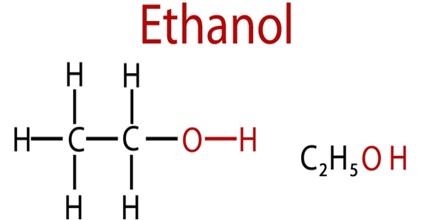
Viewpoint: EU looks elsewhere to boost ethanol supply

The T2 prompt physical assessment climbed to an average of €652/m³ last month — hitting €721.50/m³ on 19 November — as fuel suppliers looked to cover shortages in meeting renewable fuel blending targets for the year. Domestic blending mandates in the majority of EU member states will now rise in line with the EU Renewable Energy Directive (RED) 2020 target of a 10pc share of the road transport fuel pool.
The adoption of E10 — a gasoline blend that contains up to 10pc ethanol content — by more member states is encouraging demand. It is currently available in Belgium, Bulgaria, Estonia, Finland, France, Germany, Luxembourg and Romania. The Netherlands also rolled out E10 on 1 October. Slovakia, Hungary and Lithuania are due to make the grade available in 2020.
It is unpopular in Germany, the first EU country to introduce it, accounting for just 14pc of the country's 620,000 b/d gasoline market. But a further discount to E5 at service stations, if implemented, might encourage greater uptake and would offer a viable means for Germany to achieve its own greenhouse gas (GHG) savings target of 6pc, up by two percentage points on the year and in line with the EU Fuel Quality Directive (FQD).
On the supply side, the fourth quarter of the year is usually a period when extra volumes of ethanol produced from the European sugar beet harvest enter the market until February. At the same time demand declines, with most gasoline blending typically in the summer months.
While EU wheat and maize harvests in the 2019-20 season are forecast to be broadly similar to the five-year average — 1.6pc above and 0.6pc below, respectively — the sugar beet harvest is projected to be 5.1pc under the the five-year average as a result of frequent and abundant rainfall. Strong domestic sugar prices have also led producers to opt for table sugar. But with the removal in May of EU anti-dumping duties on US ethanol, which spanned the previous five years, suppliers are also looking to imported product to cover any shortfalls.
EU countries imported an average of 5,100 t/month of undenatured ethanol from the US in January-May 2019. Imports jumped to an average of 18,000 t/month in June-September. While many US ethanol producers are still unable to produce EU RED certified product, extra supply will weigh on prompt ethanol prices should more producers outside the EU market hit the minimum GHG savings requirement of 50-60pc.
US producers look likely to raise the GHG tag of their ethanol, given relatively low prices domestically. Firm values on European ethanol derivative contracts along the forward curve suggest it is economical for US product to head for Europe throughout the next 12 months. Imports from Peru should also support EU supply levels. The South American country is a consistent supplier of around 15,000 t/month of ethanol to Europe. Strong prices in Europe and a decline in prices in major consumer Brazil will likely encourage interest in transatlantic trade.
The potential impact of imports may be limited somewhat by growing EU demand for ethanol with higher credentials. There is appetite in several member states for product well above the required 50pc GHG savings baseline, particularly given challenges many countries face in meeting the FQD. The average GHG savings of ethanol produced in the EU was 71pc in 2018, according to ePure.
By Daniel Mackay


Gold price eases after Trump downplays clash with Fed chair Powell

Copper price hits new record as tariff deadline looms

Brazil producers look to halt pig iron output as US tariff threat crimps demand

Three workers rescued after 60 hours trapped in Canada mine

Gold price could hit $4,000 by year-end, says Fidelity

Chile’s 2025 vote puts mining sector’s future on the line

US targets mine waste to boost local critical minerals supply

Energy Fuels surges to 3-year high as it begins heavy rare earth production

Glencore workers brace for layoffs on looming Mount Isa shutdown

Trump tariff surprise triggers implosion of massive copper trade

Maxus expands land holdings at Quarry antimony project in British Columbia

BHP, Vale accused of ‘cheating’ UK law firm out of $1.7 billion in fees

Southern Copper eyes $10.2B Mexico investment pending talks

American Tungsten gets site remediation plan approved for Ima mine in Idaho

Kinross divests entire 12% stake in Yukon-focused White Gold

Gold price could hit $4,000 by year-end, says Fidelity

Southern Copper expects turmoil from US-China trade war to hit copper

Ramaco Resources secures five year permit for Brook rare earth mine in Wyoming

Column: EU’s pledge for $250 billion of US energy imports is delusional

Trump tariff surprise triggers implosion of massive copper trade

Maxus expands land holdings at Quarry antimony project in British Columbia

BHP, Vale accused of ‘cheating’ UK law firm out of $1.7 billion in fees

Southern Copper eyes $10.2B Mexico investment pending talks

American Tungsten gets site remediation plan approved for Ima mine in Idaho

Kinross divests entire 12% stake in Yukon-focused White Gold

Gold price could hit $4,000 by year-end, says Fidelity

Southern Copper expects turmoil from US-China trade war to hit copper

Ramaco Resources secures five year permit for Brook rare earth mine in Wyoming














